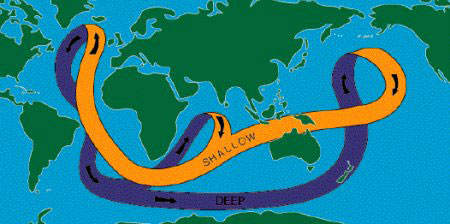Solar Storm Warning 2011-2012
Source: science.nasa.gov
It's official: Solar minimum has arrived. Sunspots have all but vanished. Solar flares are nonexistent. The sun is utterly quiet.Like the quiet before a storm.
This week researchers announced that a storm is coming--the most intense solar maximum in fifty years. The prediction comes from a team led by Mausumi Dikpati of the National Center for Atmospheric Research (NCAR). "The next sunspot cycle will be 30% to 50% stronger than the previous one," she says. If correct, the years ahead could produce a burst of solar activity second only to the historic Solar Max of 1958.
Dikpati's prediction is unprecedented. In nearly-two centuries since the 11-year sunspot cycle was discovered, scientists have struggled to predict the size of future maxima—and failed. Solar maxima can be intense, as in 1958, or barely detectable, as in 1805, obeying no obvious pattern.
The key to the mystery, Dikpati realized years ago, is a conveyor belt on the sun.
We have something similar here on Earth—the Great Ocean Conveyor Belt, popularized in the sci-fi movie The Day After Tomorrow. It is a network of currents that carry water and heat from ocean to ocean--see the diagram below. In the movie, the Conveyor Belt stopped and threw the world's weather into chaos.
The sun's conveyor belt is a current, not of water, but of electrically-conducting gas. It flows in a loop from the sun's equator to the poles and back again. Just as the Great Ocean Conveyor Belt controls weather on Earth, this solar conveyor belt controls weather on the sun. Specifically, it controls the sunspot cycle.
Solar physicist David Hathaway of the National Space Science & Technology Center (NSSTC) explains: "First, remember what sunspots are--tangled knots of magnetism generated by the sun's inner dynamo. A typical sunspot exists for just a few weeks. Then it decays, leaving behind a 'corpse' of weak magnetic fields."
Enter the conveyor belt.
"The top of the conveyor belt skims the surface of the sun, sweeping up the magnetic fields of old, dead sunspots. The 'corpses' are dragged down at the poles to a depth of 200,000 km where the sun's magnetic dynamo can amplify them. Once the corpses (magnetic knots) are reincarnated (amplified), they become buoyant and float back to the surface." Presto—new sunspots!

The sun's "great conveyor belt."
All this happens with massive slowness. "It takes about 40 years for the belt to complete one loop," says Hathaway. The speed varies "anywhere from a 50-year pace (slow) to a 30-year pace (fast)."
When the belt is turning "fast," it means that lots of magnetic fields are being swept up, and that a future sunspot cycle is going to be intense. This is a basis for forecasting: "The belt was turning fast in 1986-1996," says Hathaway. "Old magnetic fields swept up then should re-appear as big sunspots in 2010-2011."
Like most experts in the field, Hathaway has confidence in the conveyor belt model and agrees with Dikpati that the next solar maximum should be a doozy. But he disagrees with one point. Dikpati's forecast puts Solar Max at 2012. Hathaway believes it will arrive sooner, in 2010 or 2011.
"History shows that big sunspot cycles 'ramp up' faster than small ones," he says. "I expect to see the first sunspots of the next cycle appear in late 2006 or 2007—and Solar Max to be underway by 2010 or 2011."
Who's right? Time will tell. Either way, a storm is coming.
Article from: http://science.nasa.gov/headlines/y2006/10mar_stormwarning.htm
























